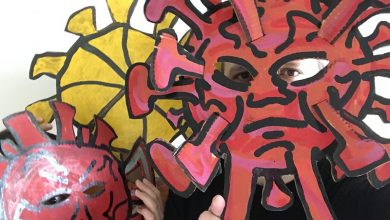OCD Quickies Part 2: Postpartum OCD

This is part 2 in an indefinite series about OCD and my personal experiences with the disorder. Today, I’ll talk about how I realized I had postpartum OCD. Here is part 1 if you missed it, about my official diagnosis and explanation of GWAS and the heredity of OCD. I believe the only way to combat the stigma of mental illness is to talk about it. While I am not a professional, I hope to help raise awareness and encourage more sufferers to seek treatment and speak openly.
Misconception about postpartum OCD vs. psychosis
Before I get started, it’s important to distinguish between the two. While I won’t get into the details here, the primary difference is that while postpartum OCD sufferers fear causing harm to their children, they will most certainly never intentionally do so. Women in this situation are firmly rooted in reality, and know that their thoughts are irrational. Conversely, those with postpartum psychosis are often confused and delusional, and there is real and serious concern for the safety of the mother and child.
Prevalence
Postpartum OCD is generally believed to occur in 2-3% of women within the first weeks of childbirth, but there is some recent indication that the prevalence may be significantly higher. Men have also been known to exhibit OCD symptoms in the aftermath of new fatherhood.
My experience
I’ve always been an anxious person, and have suffered from anxiety and depression at various levels since I was a teenager. In my mid to early twenties, I began to suspect that I had OCD tendencies since my teens as well. For years, I’d check my alarm clock several times, turning it on and off repeatedly until it felt “just right.” Every morning, I’d blow bubbles in the shower with body wash through the O shape of my thumb and forefinger until I produced one of sufficient quality and longevity to ensure a smooth day ahead. In my mid-twenties, I’d lock the car door three times in a row, listening for the beep each time.
None of these were excessively disruptive, but as I’ve learned, stressful events can trigger the onset of, or worsen OCD symptoms. I count my lucky stars because the most stressful event in my life was also the most wonderful: having my first child. I won’t get into the details of my labor and delivery, but you can read about it here. Between obstetric complications and previous OCD tendencies, the birth of my daughter was the perfect launching pad for a new onslaught of obsessions and compulsions. Still, it was months later that it dawned on me that the mire in which I was drowning was postpartum OCD.
How did it feel?
Never before and never since that period over three years ago has OCD run my life and kept me in a perpetual state of unrest the way it did then. The specific symptoms (obsessions and compulsions) in OCD and postpartum OCD vary widely, from thoughts of dropping the baby, allowing accidental harm, to fears that one will intentionally shake or sexually molest the child. I can clearly remember my most pervasive interlopers. Here are just a few examples:
-I had the very common worry that my baby would die of SIDS, with the disturbing image of finding her dead in her crib nagging me constantly. How did I combat this obsession? With a corresponding compulsion, of course. I would tiptoe to her crib, place my hand on her chest, and count the sweet rise and fall of her chest precisely five times. Usually, I wouldn’t trust that I counted five full breaths, so I’d lift my hand from her chest, and start over, counting five breaths. Once I was sure I’d counted “just right,” my fear would be appeased, but only temporarily. This occurred several times a day/night.
-As is common among proud new parents, I’d often imagine or remark to my husband about a happy future event, like our daughter starting school, getting married, or becoming president. My buoyant bliss was cut short every single time by an irrational but inescapable feeling of doom. You see, to this day, one of my typical obsessions is that hopeful or happy thoughts will cause tragedy; that my optimism will be responsible for causing illness, accident, or death to befall my family. Again, none other than the number 5, my heroic demon, stepped in to save the day. To counteract the impending tragedy, I would knock on or touch a wooden, leather, or metal object five times. You guessed it; I had to do this repeatedly until it felt “just right.”
-I’d frequently worry that my baby was sick, or that something about her behavior was unusual. To make myself temporarily feel better, I’d engage in excessive reassurance-seeking, a common OCD behavior. Basically, this took the form of my constantly asking my husband if he thought the non-symptom my daughter was exhibiting was normal, or whether he thought she was okay. (ERS is one OCD symptom that is still with me, although it is far more generalized, not only focused on the well-being of my child. I’m sure we’ll address this at my behavior therapy appointments.)
-I’d be haunted by images of finding my child’s crib empty, and being responsible for her abduction. To counteract this horrific though, I’d check the locks. Not once like any normal person, but by touching the angle of the lock five times. OCD is a disease of doubt, and my most inescapable doubt is always my own perception. To this day, even after my postpartum OCD “episode,” I do not believe that my eyes have seen “correctly,” so I must confirm with a secondary sense like touch.
Like most OCD sufferers, I knew/know that all of the behaviors I’ve described were irrational, bordering on superstition. It’s as if the rational mind and the OCD are two separate entities. Like an alcoholic needs a drink, the OCD compulsion eases the anxiety. The obsessive thought creates intolerable dissonance, and the associated compulsion provides a release; a tangible feeling of relief. The respite is only temporary, so the vicious cycle continues.
Long story short, it finally hit me like five perfectly symmetrical bricks that my behavior was not normal, not healthy, and was detrimental to my well-being and the quality of my parenting. I consulted with a doctor and was prescribed sertraline, which helped to a moderate degree. It would be nearly two years before I also got a prescription for lorazepam, and another year or so before my official OCD diagnosis.
Medication is only effective in about 70% of OCD patients, and of those, symptoms only reduce by a moderate amount. For this reason, behavioral therapy is usually recommended to augment or replace medication. I was initially planning to discuss my foray into behavioral therapy, and how CBT (cognitive behavioral therapy) helps patients manage their OCD. I’m going to save it for another post. In the meantime, I’ll leave you with a quote from one of my favorite poems by Emily Dickinson. It reminds me that the threats I agonize over will never harm me or my family the way my own mind can hold me hostage.
Ourself, behind ourself, concealed–
Should startle most–
Assassin, hid in our Apartment,
Be Horror’s least.




